As incandescent lamps, fluorescent lamps, and energy-saving lamps have gradually withdrawn from the lighting market, LED lighting sources and LED lighting fixtures have developed rapidly, and the LED industry chain has flourished with swiftly sweeping the world lighting market. The brightness of LED lamp beads is constantly increasing, and the price is gradually decreasing. HVLEDs and flip-chip LEDs are developing new application technologies for LED lighting; LED driver power chips are constantly being introduced, more integrated functions, better cost performance, more convenient application; plastic coated aluminum and high Thermally conductive plastic heat sinks provide an innovative new design space for next-generation LED light sources and luminaires.
Indoor LED light sources and lamps must be large in size The products will be produced in large quantities and have a blue ocean market. Since the space for the conventional lighting source and the lamp reserved for the LED driving power source is very small, the driving power source of the LED lighting source and the lamp must be made very compact, and the driving power chip requires high performance integration, and the single-level chip is mainly required. The entire drive power solution is not only very simple, but also low cost; the application circuit requires fewer peripheral devices, and the total number of chips + peripheral parts requiring LED drive power is less than 15, or even less than 10. LED power supply The use of tiny transformers, inductors, lower electrolytic capacitors, and even power drive circuits does not require electrolytic capacitors, inductors or transformers.
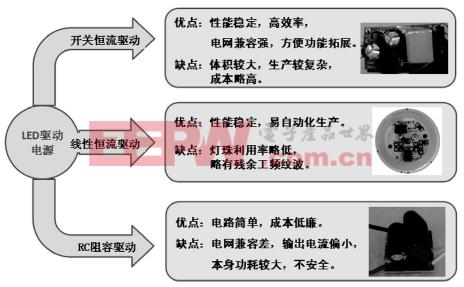
Figure 1 The main mode of indoor LED lighting drive
1 LED drive power main mode
At present, the indoor LED lighting source and the driving power supply of the lamp are divided into two modes: constant current isolation and non-isolated driving, high-voltage linear constant current driving, etc. The RC resistance-capacitance step-down is due to its large power consumption and unsafe, constant current and many bad The factors are already being phased out. The advantages of RC resistance-capacitor step-down drive: simple circuit and low cost; its disadvantages: poor grid compatibility, small output current, large power consumption and unsafe. The advantages of switching constant current drive: stable performance, high efficiency, strong grid compatibility, convenient function expansion, boost, step-down, buck-boost application are convenient and free; its disadvantages are: large volume, complicated production and slightly higher cost. The advantages of high-voltage linear constant current drive: stable performance, easy automatic production, no plug-ins and a lot of labor saving; its disadvantages: the lamp bead utilization is slightly lower, and there is a slight residual power frequency ripple. The main mode of indoor LED lighting drive is shown in Figure 1.
LED driver single-stage power chip requires built-in high-voltage MOS tube, line voltage compensation, source drive, over voltage / over current / over temperature protection, open / short circuit protection, etc. LED lighting drive power must be integrated in a single-chip chip in. The indoor LED lighting source and the narrow space of the luminaire define the driving power chip to adopt a single-stage chip, which requires the function of the driving power chip to be highly integrated, the power control function and various protection functions are integrated into the chip as much as possible, and the driving power chip is driven. Topology design technology must be innovative, and new models must be created to meet the innovative development of LED lighting drive technology.
2 non-isolated switch constant current drive has become mainstream
The rise of thin plastic-clad aluminum radiator technology and HVLEDs technology solves the safety problem of internal high-voltage electric leakage when the AC mains high voltage is turned on and the LED lamp bead is turned on. The plastic aluminum radiator is simply and easily solved. LED light source inside the lamp and the high pressure from the outside of the technical difficulties, and therefore the application circuit using simple non-isolated constant current power supply switching power scheme has become the mainstream general illumination light and cheap LED lamps. Non-isolated constant current power supply switching chip after several generations to develop newer, more integration now, the application circuit simpler, lower cost applications, more cost competitive power.
In view of the reduced heat generation of the HVLEDs, the plastic-coated aluminum radiator simply solves the high and low voltage isolation in the LED lamp. The selection of the driving power source is based on constant current accuracy, power supply efficiency, power factor compensation (PFC), and isolated. Switching constant current power supply is generally 70%-88% due to the use of transformer, power factor compensation is less than 0.9; non-isolated switching constant current power supply constant current accuracy can reach 3%-5%, power factor compensation is greater than 0. 9, the power efficiency is greater than 90%, so it has become the first choice for LED lighting. The non-isolated constant current power supply has two types of non-isolated switching constant current power supply and high voltage linear constant current power supply.
The non-isolated switch constant current driving power supply chip design has been highly integrated, and the functions required for the LED driving power supply, such as wide voltage input high precision constant current output, over current protection, over voltage protection, LED short circuit and open circuit protection, and CS resistance short circuit have been short-circuited. The necessary functions such as protection, chip power supply undervoltage protection, etc. have been integrated into a single-stage chip. The MOS tube and constant current control of the power output are also integrated on a single chip. The application circuit is very simple, and the peripheral parts can be generally controlled in 15 Below, it helps to effectively control material costs and production costs for end customers.
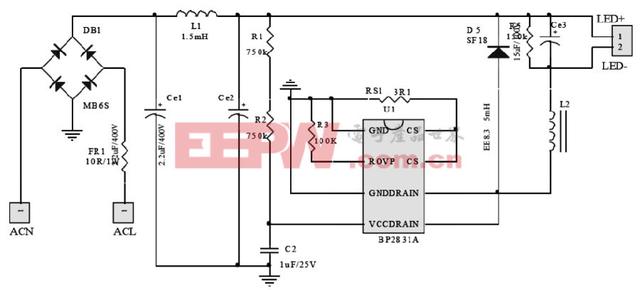
Figure 2 BP2831A non-isolated switch constant current source
The non-isolated switch constant current drive power application is simple and cost effective. As shown in Figure 2, the 5W LED bulb power supply designed by the non-isolated switching constant current source chip BP2831A is output DC80V, 60mA, including the main chip. The total number of components used in the whole circuit is 15 and the power efficiency is AC220V at full load. Up to 92%, the power supply can pass the EMC test. The diameter of the PCB of the power supply can be as small as Φ18mm.
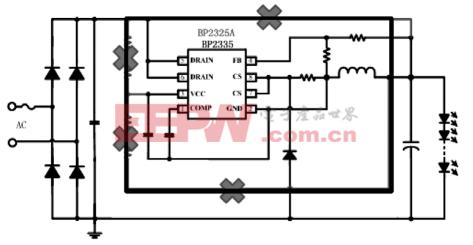
Figure 3 Upgraded chip application
Non-isolated switch constant current The design technology has been constantly innovating and improving. After a chip is introduced, it will immediately improve the existing deficiencies, or add new functions, and keep the pin unchanged without introducing the next generation of upgraded chips. Not rising and falling, not only enhance the cohesiveness of old customers, but also attract new customers. The upgraded chip application scheme shown in FIG. 3 can eliminate the bold portion of the original chip application scheme, thereby effectively saving application cost.
3 isolation switch constant current drive chip accounts for three points in the city
The isolating switch constant current driver chip also accounts for one-third of the overall market. Many LED light sources and lamps still use aluminum alloy heat sinks with good heat dissipation performance, which requires the use of isolated switching constant current drive power supplies.

Figure 4 BP isolation switch constant current driver chip development path
In recent years, the isolation switch constant current drive power chip technology is constantly developing. From the development history of BP's isolating switch constant current drive power chip, the chip with power factor PFC> 0.5 has experienced BP3102, to BP3122, BP3132. Until today, the simple and cheap version of BP9112 was applied; the chip with power factor PFC>0.9 went through BP3309 to BP3318 and BP3319. BP's isolation switch constant current driver chip development path is shown in Figure 4.

Figure 5 Technical innovation of isolated switch constant current driver chip
Technical improvements disconnector constant current driver chip is an auxiliary winding from the upgraded application circuit chip removable transformers, diodes and the attachment circuit, the resistance started, as shown in FIG. The initial innovation of the isolating switch constant current driving chip technology, that is, the primary side feedback, the auxiliary winding technology is removed, and the application circuit is effectively saved. Subsequently, it changes the compatibility of the chip to the transformer requirements, changes the internal algorithm design of the chip, makes it insensitive to some electrical parameters of the transformer, and only pays attention to the turns ratio, thereby effectively reducing the transformer manufacturing cost. Enable on-chip fast-start design technology to meet the requirements of the application circuit design to turn on the light. The continuous innovation of chip design technology has enabled the new generation of chip functions to continue to increase, and manufacturing costs continue to decline. Creating a new generation of chips is more competitive in the market.
4 cheap switch constant current driver chip emerges
An application technology is simple and reliable, the application cost is low, and the performance is highly integrated. Only three low-cost switching constant current driving chips with isolated and non-isolated applications in SOT89-3 or TO92 packages have emerged this year. It may bring fire to the cheap indoor LED lighting driver power supply market, which has been fiercely competitive. It has several typical products that are isolated and non-isolated.
KP1032TP is a highly integrated non-isolated Buck-Boost switch constant current (CC) control LED lighting power driver chip, suitable for LED lighting non-isolated circuit applications. The KP1032TP integrates a 650 V MOSFET; integrates a high voltage fast start / IC self-powered circuit and a new transformer degaussing circuit; integrated undervoltage lockout (UVLO), cycle-by-cycle current limit (OCP), over temperature protection (OTP); LED open/short protection; Buck-Boost topology supports high output voltage; constant current accuracy ±4%; very small VDD operating current; built-in AC linear constant current (CC) compensation.
KP1031 is a highly integrated isolated PSR switch constant current (CC) control LED lighting power driver chip, built-in 650 V MOSFET, integrated high voltage fast start / IC self-powered circuit and a new transformer degaussing circuit, eliminating transformer auxiliary winding . In CC mode, the integrated circuit uses PFM to control CC compensation. The versatile essential features are similar to the KP1032.
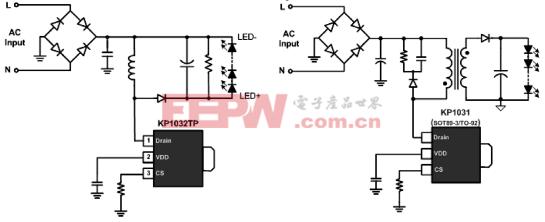
Figure 6 cheap switch constant current driver chip
The emergence of inexpensive switching constant current driver chips (Figure 6) can reduce the power production cost of affordable LED light sources and lamps to less than one dollar or less. The low-cost switching constant current driving power supply has fewer than 10 peripheral components, and the production cost is even lower than that of the conventional resistance-capacitor step-down power supply, which is beneficial to comprehensively eliminating unsafe or constant current RC capacitors.
5 Linear constant current drive technology is getting better and better
The driving power of LED lighting fixtures pursues high PF (Power Factor Power Factor) and low THD (Total Harmonic Distortion), which are both the customer's hope and the power system requirements. The ENERGY STAR and International Telecommunications Commission (ICE) specifications require LED driver chips to have high power factor correction (PFC) to ensure conversion efficiency and lamp life.
LED light source and lamp power supply introduce high-voltage linear constant current to drive the new generation power supply technology. Without the switching frequency of the power supply, there is no residual switching frequency residual, and the ripple will be greatly reduced. The application circuit has no transformer and other magnetic components and electrolytic capacitors. The PF of the linear power supply is therefore increased and the THD is thus reduced.
Most high-voltage linear constant current driving chips use segmented lighting technology to drive HVLED illumination. At present, there are several methods for segmentation, such as 1 segment, 3 segments, 4 segments, and 6 segments. The more segments, the higher the power supply efficiency, but the more control lines are connected to the HVLED, such as the N segment, the control line. The number is N+1. When the segmentation is too much, the power efficiency improvement is not obvious, but the application line is slightly complicated, which is not desired by LED lighting designers. More suitable for the application of photoelectric integrated modules is the segment drive of 1 segment, 3 segments and 4 segments. The 1-segment drive has a built-in MOS. Although the power supply efficiency is poor, it can meet the needs of a special space such as a candle. The 3-stage and 4-segment drive built-in 3-4 MOSs are currently the preferred constant current drive method, taking into account power efficiency, PF. And THD, the application scheme is relatively simple, and the application cost is low. The linear constant current driving chip with built-in MOS is especially suitable for the application of integrated photovoltaic modules, and its application circuit components are few, which is beneficial to the light distribution design of HVLED. For example, the three-stage high-voltage linear constant-current driving circuit is very simple, and there are few peripheral components, so the driving power source and the HVLEDs light source can be designed on the same aluminum substrate or ceramic substrate. Figure 7 is a three-stage high-voltage linear constant current driver chip application diagram.
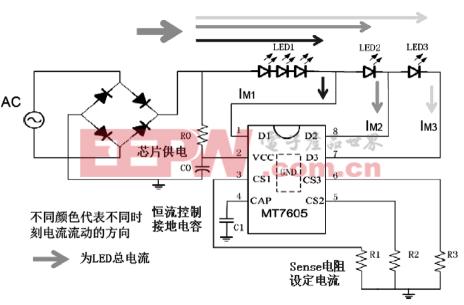
Figure 7 Three-stage high-voltage linear constant current driver chip application diagram
The high-voltage linear constant-current driving power supply has a narrow input voltage range and is only suitable for constant-voltage input. Its pulsating DC output has a parasitic power frequency and its residual frequency, resulting in some stroboscopic light after it is made into an LED lighting. These problems have caused misunderstandings in the industry that the use of light engines is limited and the scope of application is narrow. The high-voltage linear constant current driving power supply chip is a constant-voltage input driving power chip, which is ±10% latitude from the initial input power supply to the current ±20%, that is, the AC220V can be from AC180V-260V, which basically satisfies a lot. In the face of stroboscopic fluctuations, we need to develop a stroboscopic evaluation consensus for LED lighting. For example, fluorescent lamps and downlights are used when they leave the audience at 50cm or more, so there is no strobe outside 50cm. Recognized as a qualified product. Even so, the photoelectric engine needs to make further improvements and technical improvements in the design of the power chip.
After several generations of improved design, the high-voltage linear driver chip has moved from the original analog circuit chip to the digital-analog hybrid circuit chip and to the digital circuit chip. Therefore, the performance of the high-voltage linear driver chip is more perfect and more stable; digital-analog hybrid High-order piecewise linear constant current drive chips have been mass-produced.
The high-PF and low-THD high-voltage linear constant-current driving chips will become one of the first choices for indoor low-cost LED light sources and lamp driving power supplies due to their simple and efficient application circuit and low application cost.
The high-voltage linear constant current driving chip is especially suitable for industrial automation to produce LED photoelectric integrated module, namely "photoelectric engine", which greatly improves production efficiency and effectively saves labor. It can save space for independent power supply and effectively reduce manufacturing costs for a new generation of LED light sources and lamps. Figure 8 shows a photovoltaic engine using a high voltage linear constant current driver chip.
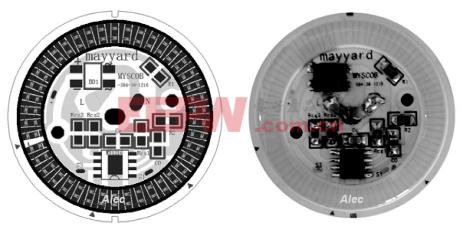
Figure 8 uses a high-voltage linear constant current driver chip for the photoelectric engine
On the other hand, due to the increasingly perfect technology of high thermal conductivity plastic radiator and plastic aluminum radiator, the cost of aluminum plastic radiator is lower than that of all metal radiator, and the insulation performance is better, so the photoelectric engine and plastic package are used. Composition of the aluminum radiator lamps and more secure and reliable sources.
6 Summary
The innovative development of LED lighting drive technology relies on the technological innovation of LED lighting driver power chips. LED lighting driver power chip design technology is rapidly developing rapidly, chip system structure, topology design technology continues to innovate, chip internal algorithm technology innovation, chip design to remove useless redundancy, actuarial chip area will effectively control chip cost. The design of isolated and non-isolated switching constant current driving chips is complicated and simple. Today, the emergence of low-cost switching constant current chips is more important for LED lighting driver chip technology innovation! The rise of high-voltage linear constant current driver chips highlights the design method that can innovate more LED lighting driver power chips! Therefore, LED lighting drive technology will inevitably be a hundred flowers.
Wall Mount Digital Signage,Touch Screen Digital Displays,Advertising Led Display Screen,Wall Mount Digital Signage Player
ALLIN , https://www.nbdisplayapio.com